Wright's wasmuth portfolio
|
-
About this Collection
In the first decade of the 20th century, Frank Lloyd Wright's new Prairie Style of architecture was more appreciated in Europe than in the United States.
Leading German publisher Ernst Wasmuth published Ausgeführte Bauten und Entwürfe, von Frank Lloyd Wright in 1910. This publication, known today simply as The Wasmuth Portfolio, consists of 72 folio plates and 28 tissue overlays, and is considered to be one of the most influential architectural publications of the twentieth century.
The work includes ground plans, sections, perspective views, and interior details of Wright's work to that date. Built and unbuilt residences, churches, and commercial buildings are meticulously and artfully presented.
-
Frank Lloyd Wright's Coonley House, designed in 1908
Interior view of a house designed by Frank Lloyd Wright for the Avery Coonley family in 1908 at Riverside, Illinois. The Coonley House is a quintessential example of a Prairie Style home, with its long, low spaces and huge horizontally oriented fireplace. The home has been designated a U. S. National Historic Landmark.
This image is from a plate that is part of the Wasmuth Portfolio of Wright's work (1910).
-
Exterior of the Dana House in Springfield, Illinois, designed in 1902
In 1902, Susan Lawrence Dana commissioned Frank Lloyd Wright to design her home in Springfield, Illinois. It is a splendid example of Wright's Prairie Style homes, featuring low horizontal rooflines, wide eaves, artglass windows, an open floor plan and dominant hearth. It boasts hundreds of pieces of furniture, fixtures, and artworks designed by Wright, still in their original positions today. 12,000 square feet of living space is distributed on 3 main levels, with 16 different levels in all.
Now owned by the State of Illinois, it is open to the public.
This is a deliniation of the exterior of the house from the Wasmuth Portfolio of Wright's work (1910).
-
Frank Lloyd Wright's Larkin Building in Buffalo, New York, 1902
Exterior view and ground plan of the Larkin Company administration building in Buffalo, New York, designed in 1902 by Frank Lloyd Wright.
Wright later claimed that with this building, he successfully broke away from designing boxes for the first time. For this commercial building, he used vertical lines and a large centralized interior space. Wright's ornamentation, or lack of it, was a conscious rebellion against the prevalent use of revival styles in the United States, such as those practiced by Daniel H. Burnham. The building was demolished in 1950.
This plate is from the Wasmuth Portfolio of Wright's work (1910).
-
Interior of the Dana House in Springfield, Illinois, 1902
This interior rendering of the Dana House in Springfield, Illinois features Frank Lloyd Wright's signature window designs. It also depicts a dramatic view of the various levels of the house. Wright designed every aspect of his buildings, including all the furniture and interior decoration.
This plate is from the Wasmuth Portfolio of 1910.
-
Proposed lakeshore house for the McCormick family, 1907
Frank Lloyd Wright designed this sprawling lakeshore summer residence for wealthy Chicago industrialist Harold McCormick and his wife, the former Edith Rockefeller, in 1907. This design illustrates Wright's ability to design a house that looked as if it had grown naturally right out of the landscape. It was never built, however, as the McCormicks turned Wright down in favor of a Classical Revival style Italian villa.
This image was included in the Wasmuth Portolio of Wright's work (1910).
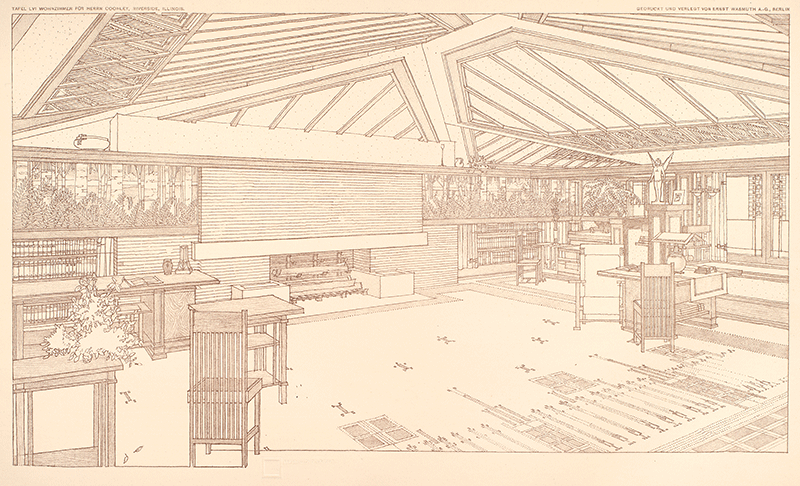 View Image
View Image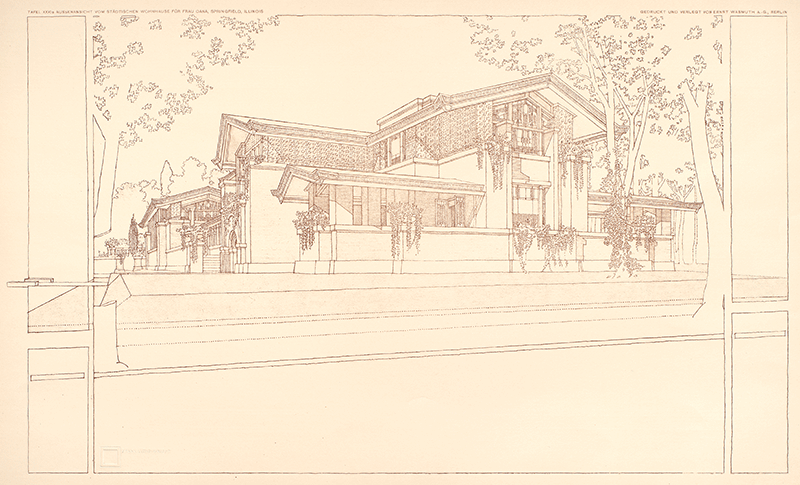 View Image
View Image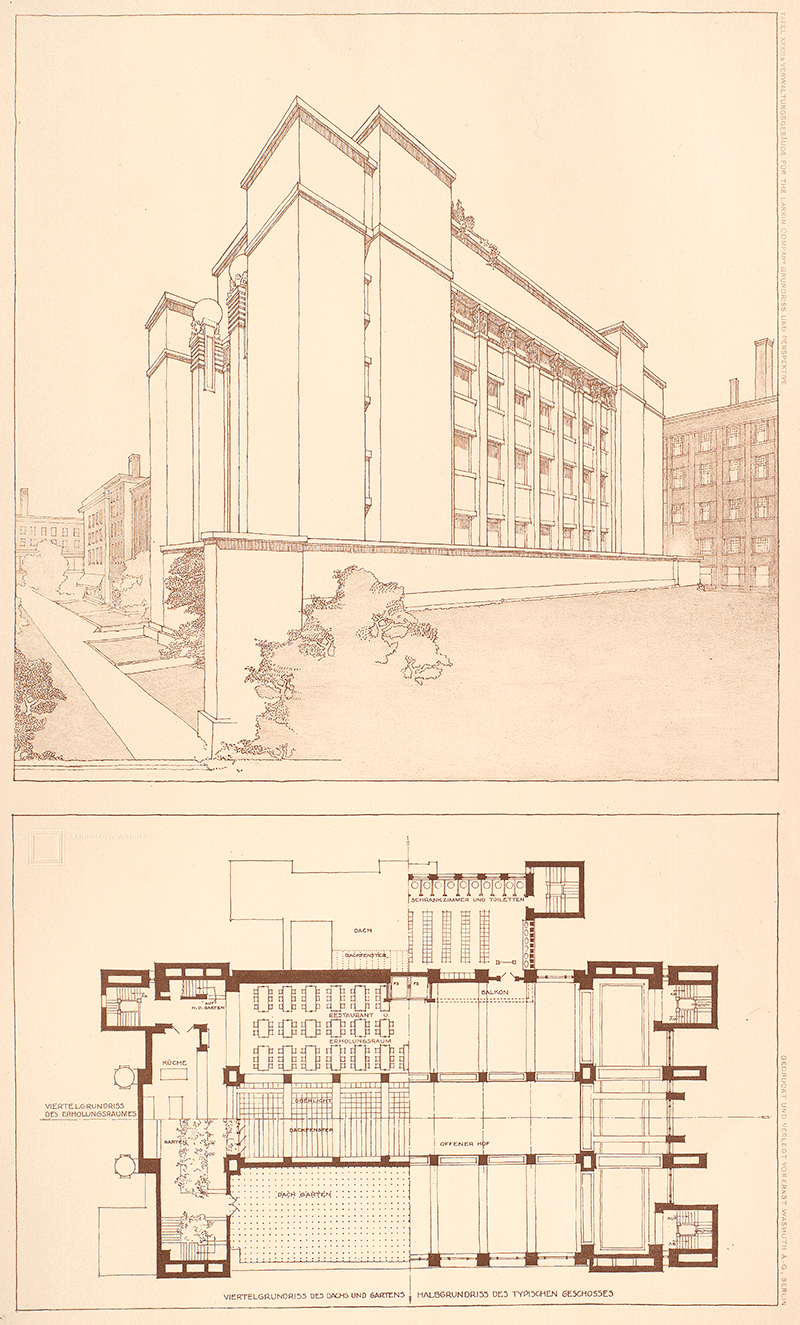 View Image
View Image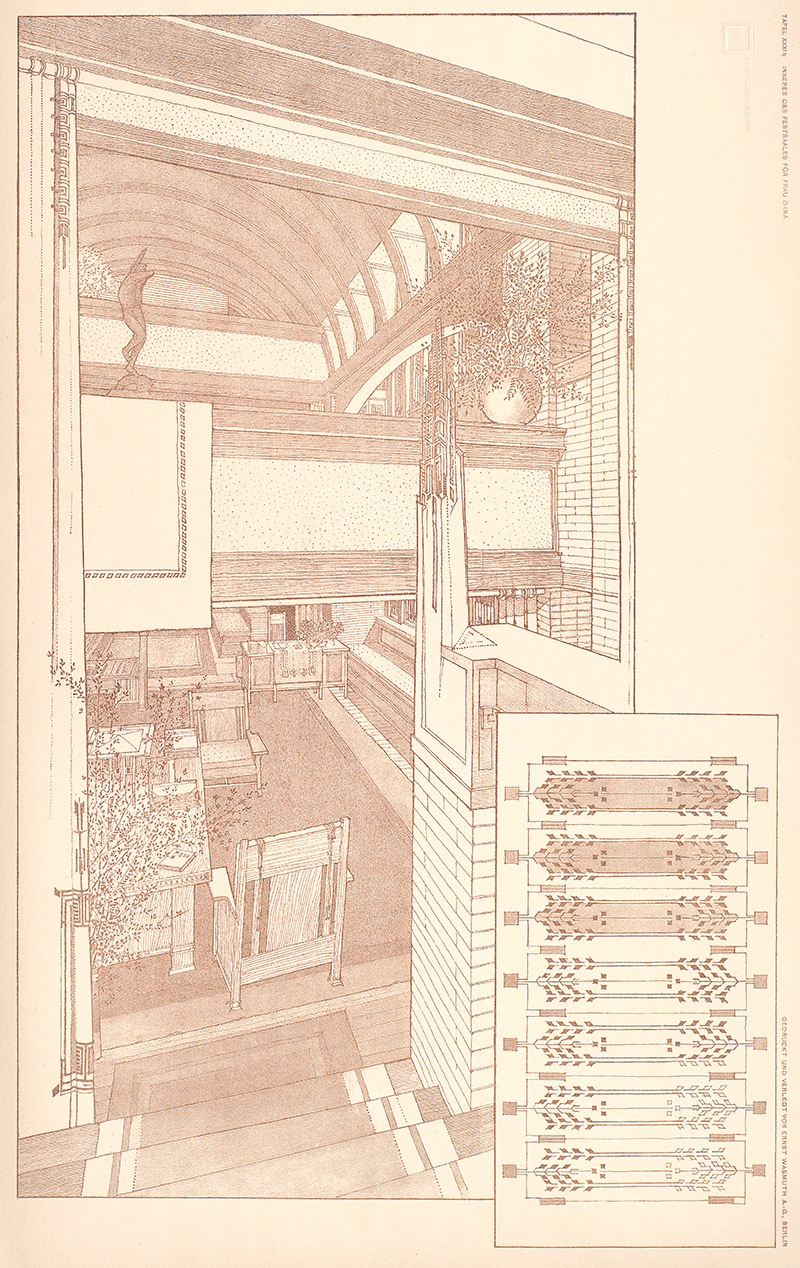 View Image
View Image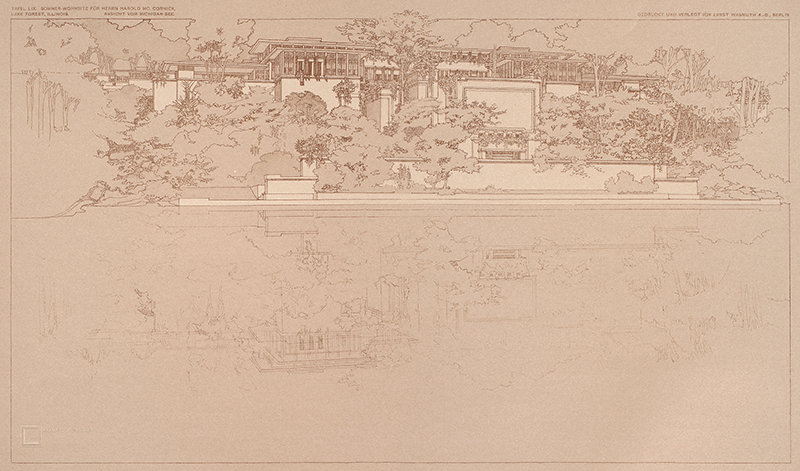 View Image
View Image